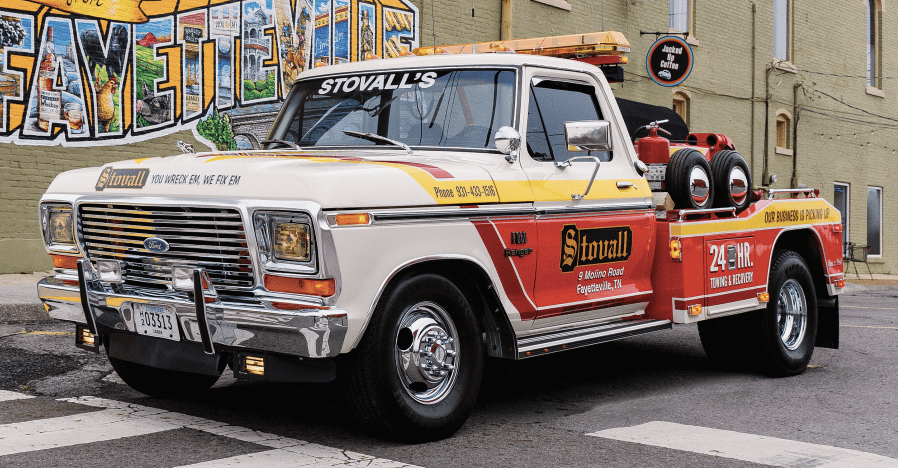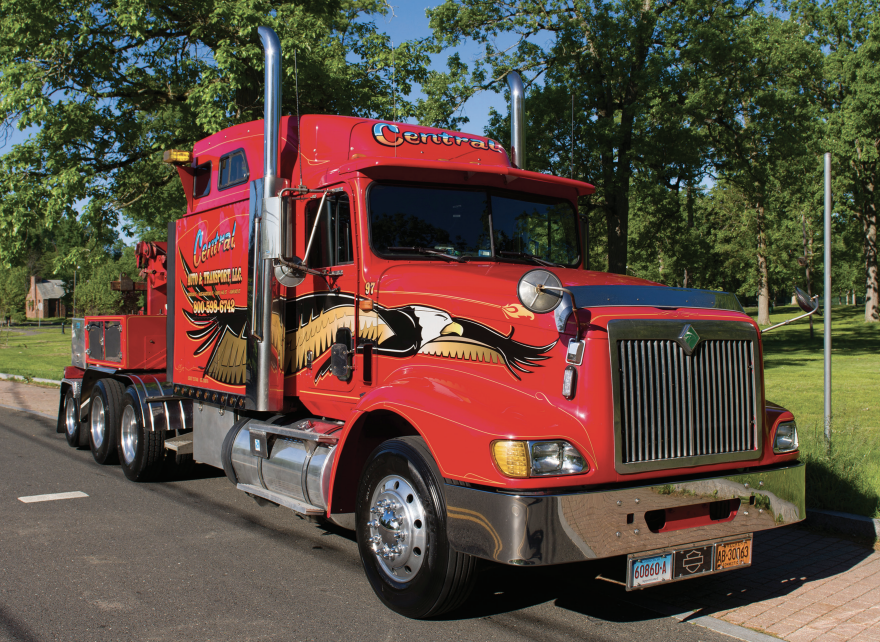Audio Article: Keep Working Trucks On The Road
Keep Working Trucks On The Road
from the January 2023 Issue of Tow Times Magazine
 Oil Changes, Oil Changes, Oil Changes
Oil Changes, Oil Changes, Oil Changes
Stovall Body Shop & Wrecker Service’s 1973 Ford F-350 with a Century 402 body and a Formula 1 wheel-lift is featured in this issue as the 2022 winner of Shine ’n Star Working Truck category. This truck has been driven by four generations of the Stovall family. It was purchased new in 1973 and has been registered and inspected with the Tennessee Highway Patrol since then — on call for 50 years. When it comes to keeping older trucks, or newer ones, on the road, the Stovall crew swears by oil changes, oil changes, oil changes — along with STP oil treatment. “Oil changes are cheap insurance,” Darryl Stovall says. The Fayetteville, Tenn., company performs oil changes on gas trucks every 2,500 miles. Diesels about 5,000 miles. In-house mechanics inspect the trucks as part of a maintenance schedule. Also important, Stovall says, is to document and keep files of when maintenance was performed and parts were ordered. By keeping records, maintenance patterns can be discerned — as is the topic of this issue’s Troubleshooting column (page 49). “We have a truck that needs brake servicing every 15,000 to 20,000 miles, no matter who drives it,” Stovall says, adding that when it comes time for an oil change around that many miles, the brakes are serviced as well.
Fix It While It’s Small
George and Edie Grogg of Ellsworth Service Center in Ellsworth, Kan., won the Working Truck category of the 2020 Shine ’n Star contest with their 1994 Peterbilt with a Jerr-Dan 50-ton unit. The truck, nicknamed “Lifeline,” was featured on an episode of the CMT channel series Trick My Truck. Today, Lifeline has logged over 1,200,000 miles. George Grogg says that every 5,000 miles their light- and medium-duty trucks are brought in for a major maintenance workover — including brake adjustments, hoses, belts, etc. — and every 10,000 miles for the heavy-duty trucks. Pre-trip, walk-around inspections are conducted daily before the trucks hit the road. Even with a maintenance schedule, Grogg is a firm believer in addressing any maintenance repair or replacement item as soon as it’s discovered. Fix it while it’s small, he says, before it turns into a big problem. This isn’t done just to keep the equipment working, he says, but to ensure that if one of his commercial vehicles is in a traffic accident, it won’t have potential liability issues with faulty components. Particular attention is paid to brake adjustment, but seemingly small maintenance items are important such as making sure tires are inflated properly, wheels and lug nuts are inspected, and windshields and mirrors are clean. Grogg is a stickler for having clean trucks — inside and out. If your truck is clean, he says, people feel more comfortable about you towing their vehicles
 “We Don’t Let Things Fester”
“We Don’t Let Things Fester”
Central Auto & Transport of Hartford, Conn., won the Working Truck category of the 2018 Shine ’n Star contest with their 1997 International Eagle mounted with an NRC QuickSwap. Both are still in use today, the International now having racked up 750,000 miles. “We have a stringent maintenance program,” says Joe Guarino, director of operations. It starts out making sure their mechanic inspects the fleet trucks every two weeks to check components such as drivelines, suspensions, brakes and clutch adjustment. Fluids are checked daily. The towing equipment is greased weekly. Center pins on wheel-lift crossbars receive focused attention and are greased daily, or every other day. An important part of their truck maintenance is making sure items needing repair or replacement are addressed quickly. “We don’t let things fester,” Guarino says. “If something is broken, it gets fixed immediately. Even if it’s something small, it can lead to downtime and us not making money.”
Cab and Chassis Maintenance Points
The best place to start to maintain a commercial truck chassis is the vehicle owner’s manual. Following the manufacturer’s recommendations for your specific truck takes the guesswork out of what maintenance to perform and when (intervals), and what type of oil, lubricants and other fluids to use. Basic maintenance points for inspection include:
- Engine oil and filters
- Fluid levels
- Hoses and belts
- Electrical system
- Brakes
- Tires/wheels
- Fuel system
- Cooling system
- Exhaust
- Drive shafts/CV joints
- Steering and suspension
- Lighting, interior/ exterior
- Windshield wipers
- Windshield and mirrors
- Horn